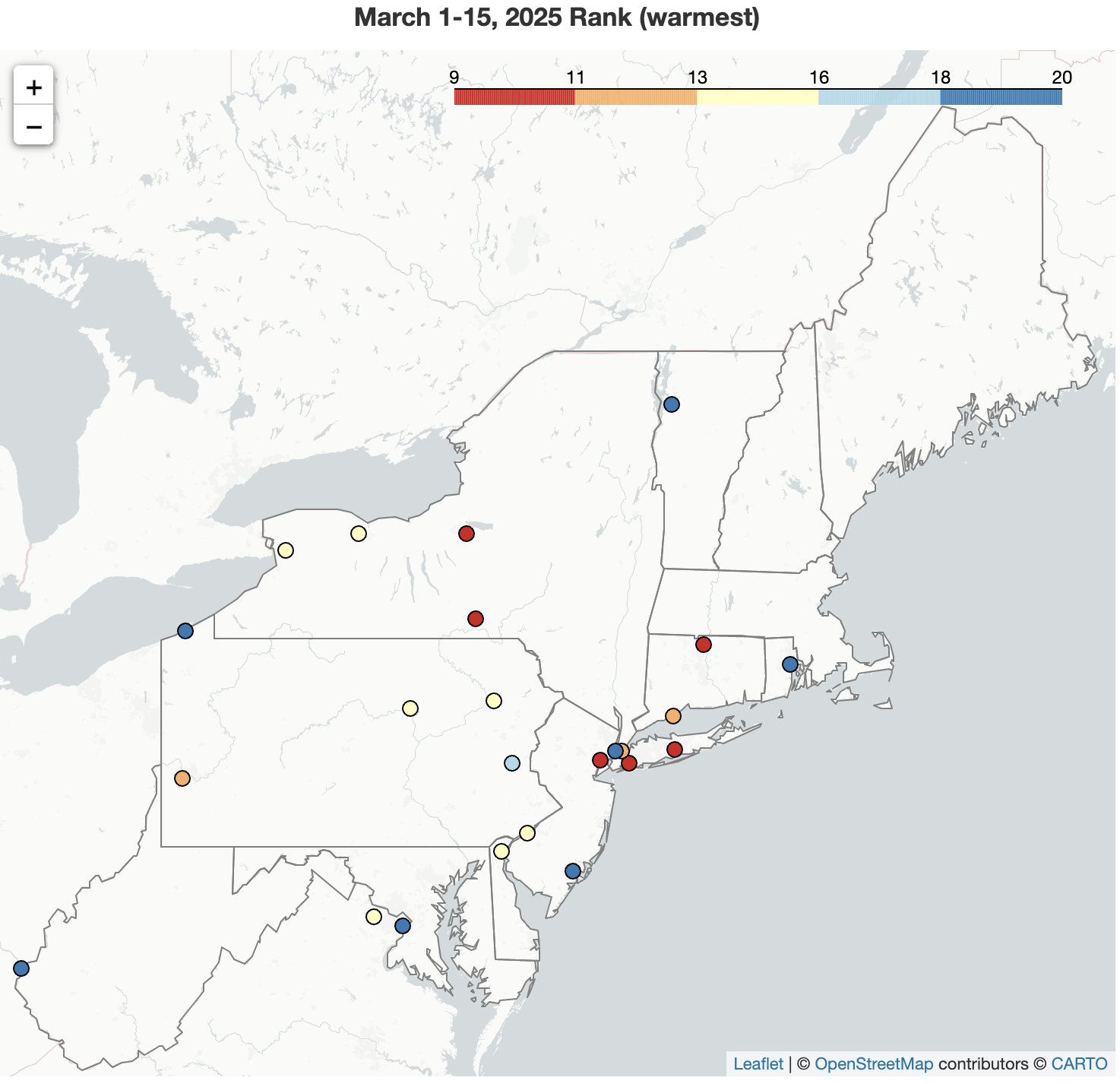
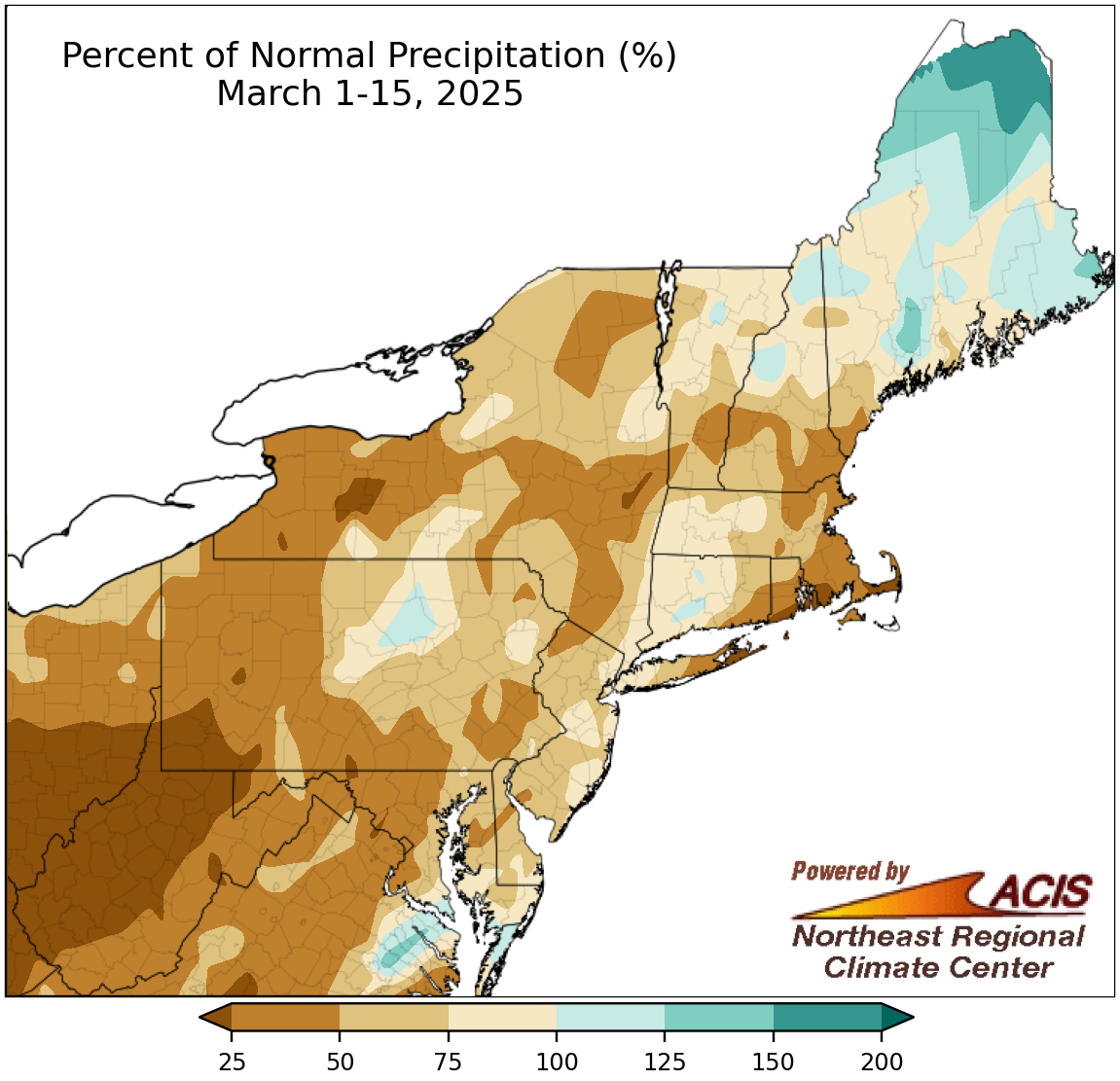
A Warm, Dry Start to March
The first half of March wrapped up with above-normal temperatures across the Northeast, ranking among the 20 warmest March 1-15 periods for 24 of the region's 35 major sites. For much of the region, the first half of March was also drier than normal, with parts of West Virginia seeing less than 25% of normal, and featured below-normal snowfall, with deficits of over 6 inches in parts of New York and New England.
Read more in the NRCC BlogNortheast Drought Status

Coastal Improvement; Inland Deterioration
It was another week with both improvement and deterioration across the Northeast. Some northern and coastal areas saw beneficial rainfall, allowing drought to contract. Despite this improvement, several sites along the Interstate 95 corridor in the Mid-Atlantic continue to have notable long-term precipitation deficits. Meanwhile, some southern and interior areas missed out, leading to drought expansion. Multiple locations have seen only 25% to 50% of normal precipitation so far this March. For instance, through March 27, Elkins, WV, had received 1.05 inches, which was 30% of normal and ranked as the site’s fifth driest such period.
- Extreme (D3) drought contracted slightly in southern New Jersey.
- Severe (D2) drought shrank in southeastern New Jersey and Delaware but spread in south-central Pennsylvania, western Maryland, and eastern West Virginia.
- Moderate (D1) drought eased in spots along a path from southeastern Maryland to eastern Maine but expanded in south-central Pennsylvania, western Maryland, and West Virginia.
- Abnormal dryness (D0) was erased from parts of northern New England and northern New York but grew in interior areas from West Virginia to western New York.
- Record-low streamflow was present in parts of West Virginia, Maryland, Pennsylvania, and New Jersey.
- Record low groundwater levels were found in seven out of the 12 Northeast states, particularly in the Mid-Atlantic and western New York.
- Reservoir levels in New Jersey increased slightly but remained below or near average.
- The outlooks for April 2 to 10 call for above-normal precipitation, which could pause deterioration or even lead to some improvement in areas that see sufficient amounts.
- More precipitation will be needed to offset increasing evapotranspiration rates as we get further into spring.
Website Highlights
Weather Station Data
Weather Station Data includes location-specific information, such as wind data, evapotranspiration, and daily almanacs.
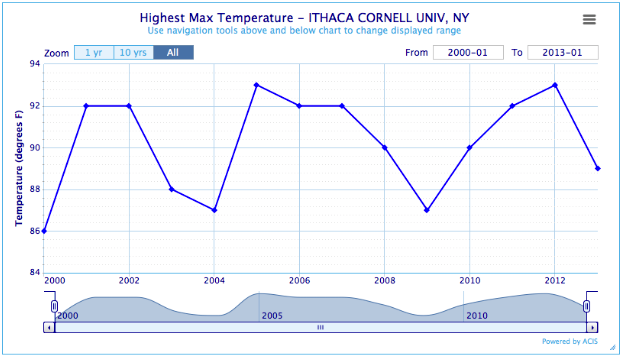
CLIMOD 2 is a user-friendly website to find single-station and multi-station climate products for locations accross the country. For example, the Seasonal Ranking report produces a graph and table of extremes or other summaries for a specified period for each year.
Go to CLIMOD 2State & Regional Analyses
These provide several map types, regional climate summaries, snow survey data, and drought information.
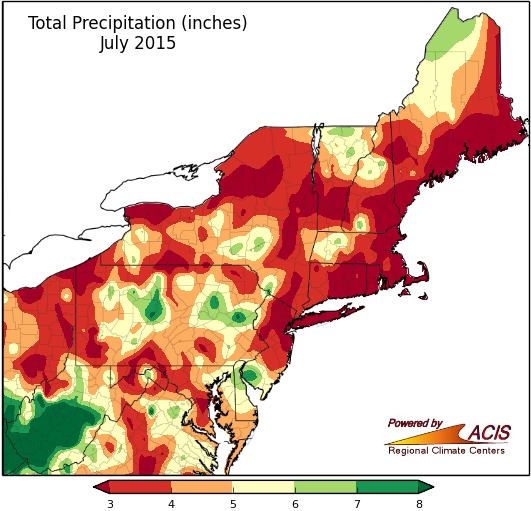
The Monthly Maps offer a variety of monthly precipitation and temperature departure maps for any given month for the Northeast region or a selected state.
Go to Monthly Map pageAnalyses for Industry
Analyses for Industry shows products the NRCC has created through partnerships with various industries.
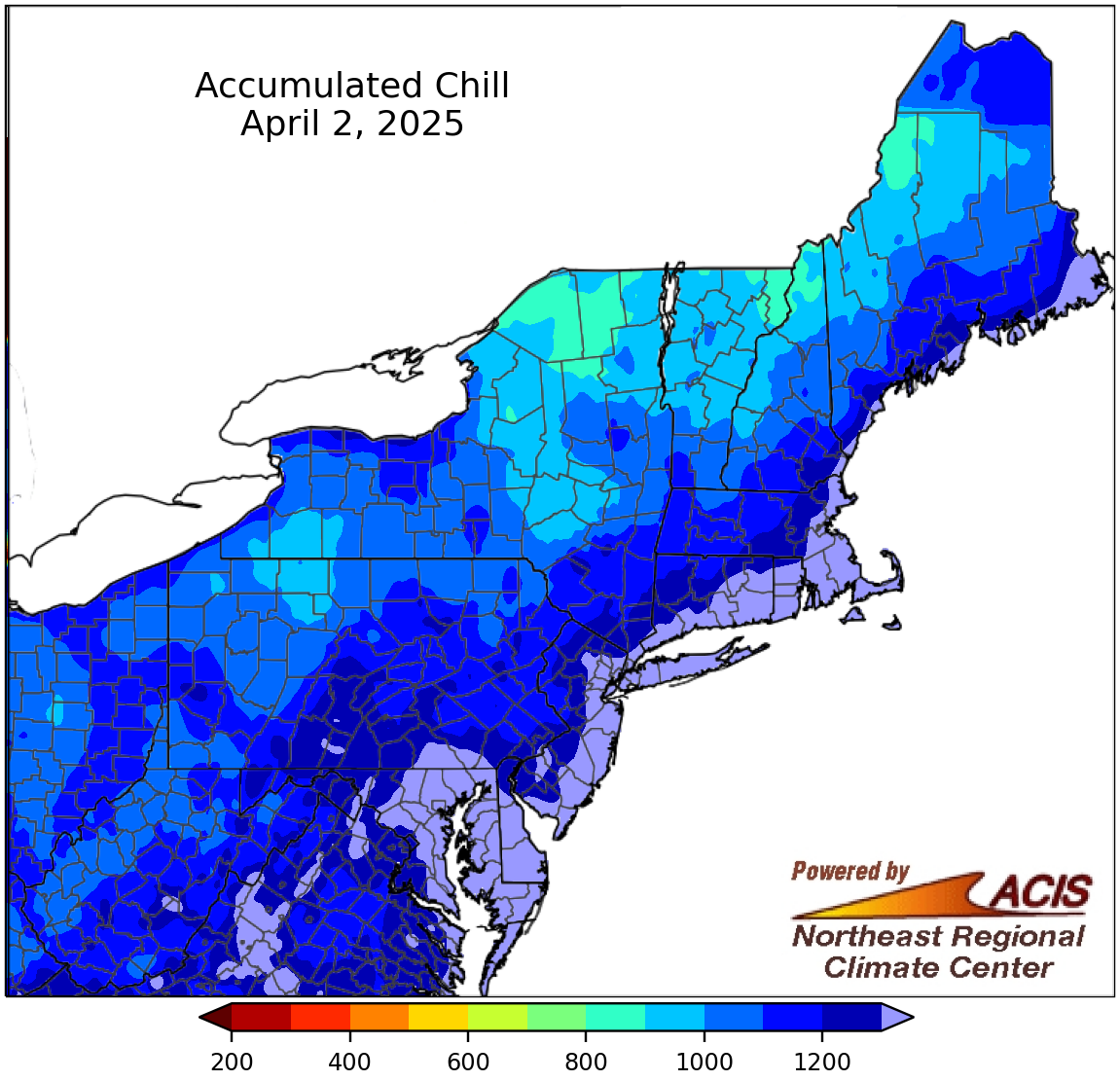
The Apple Frost Risk page has maps and animations for Red Delicious, Empire, and McIntosh apples. The maps show accumulated chill, growing degree days, phenological stages, and kill probability.
Go to Apple Frost RiskWebinars & Workshops
Webinars & Workshops provides recordings and presentations from the monthly webinar series, as well as information on past and upcoming workshops.

The Northeast Regional Climate Center hosts a monthly webinar series with NOAA affiliates to address timely weather topics.
Go to Monthly WebinarsPublications & Services
Publications & Services includes the NRCC blog, quarterly outlooks, as well as other reports and publications.
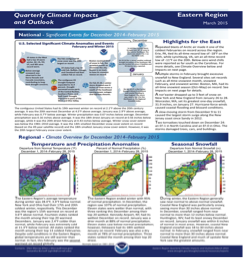
The Quarterly Outlooks are seasonal climate highlights and outlook for the upcoming season for the Eastern, Region, Great Lakes, and Gulf of Maine. Published in March, June, September and December.
Go to Quarterly Reports